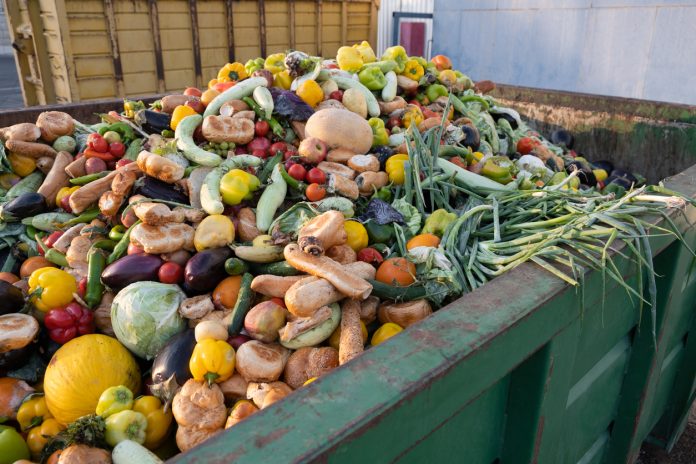Each year, 1.3 billion tons of food are thrown away. Addressing food loss and waste effectively requires strong, decisive action from governments. Those willing to take bold steps can gain economic, social, and environmental benefits while helping to mitigate food insecurity
We all live with an unacceptable reality: there is enough food for everyone on our planet, but we waste about one-third of everything we produce, while 784 million people face chronic hunger. And it gets worse: all that food rotting in landfills produces potent methane gas, accounting for up to 10% of global greenhouse gas emissions.
Food loss and waste are omnipresent but still receive little attention on the global stage despite their major societal and planetary impacts. By studying food loss and waste policies in more than 25 countries at the Global Food Donation Policy Atlas, we have sought to identify the best practices from around the world that show us how we can turn waste into opportunity, feeding more people and protecting the planet.
Food loss and waste
Across the world, about 1.3 billion tons of food end up in landfills every year, and food loss and waste (FLW) is substantial in every country, regardless of its wealth.
FLW is expensive for everyone: people, businesses, our planet, and societies as a whole. It is estimated to cost the global economy US$1 trillion annually. FLW produces 20% of global methane emissions, which are 86 times stronger than CO2 for their global warming effects, accelerating our climate crisis.
If we were able to redirect just half of all food lost in the post-harvest and transportation segment to hunger relief, we could feed a billion people while reducing emissions.
But food loss and waste – loss referring to food from post-harvest down to wholesale distribution and waste referring to retail, food service, and consumer sectors – is a complex, multisectoral challenge that stretches across the supply chain.
The food waste hierarchy
The end goal of reducing FLW is to feed more people and mitigate the environmental impacts. Solutions should reflect this.
The European Commission and the U.S. Environmental Protection Agency have hierarchies for food waste alternatives based on maintaining the nutritional value of food and reducing greenhouse gas emissions as much as possible. Beyond reducing overproduction, both advocate for recovering and redistributing food before it goes to a landfill, the work of food banks and other food recovery organizations. If food has already been produced, donating it and redistributing it to people facing food insecurity is the most valuable solution for societies and the environment.
For surplus food that is no longer fit for human consumption, the scale recommends animal feed, composting, anaerobic digestion with beneficial use of biosolids, and applying it to the land as alternatives with limited benefits.
Putting food waste down the drain, landfilling it, or incinerating it should be avoided at all costs.
Following this hierarchy serves as a guide for governments everywhere.
Facilitate food donation
Given the number of people facing hunger and the nutritional loss of FLW, a critical first step is to facilitate food donations. Our research has shown that a major barrier to food donation is fear from companies or individuals that they will be held responsible if someone gets sick after eating donated food, so they prefer to discard edible food. While some countries around the world have implemented clear, comprehensive legal protections for food donors that donate food that meets all safety standards – including in Argentina, Brazil, and the United States – most countries still lack liability protection, limiting food donation.
Another important, cost-free policy fix for food loss and waste is date labeling. In most countries, food date labels use the hazy term ‘Best before,’ which indicates product quality, not food safety. Still, many retailers, restaurants, and consumers dispose of food once it hits its ‘Best before’ label, even though it may still be perfectly healthy and nutritious. By requiring dual date labels – one ‘Best before’ indicating quality and another ‘Use by’ indicating food safety – as well as educating consumers and businesses that food can be donated and consumed past the date used for quality, countries can prevent good food from going in the bin, as they have in the UK.
Other policies can also facilitate food donations, like tax breaks for food donations and grants or investments in food recovery infrastructure so food banks and other food recovery organizations can build their footprint to collect and redistribute more surplus food.
Bringing together stakeholders
But no single policy can solve this conundrum. Food loss and waste cross various sectors of the economy and impact many government agencies. There is often a patchwork of actions underway across environmental and agricultural government agencies, companies trying to meet ESG goals, and non-profits focused on hunger relief and environmental protection.
One of the key lessons we have learned around the world is that to make significant impacts on FLW; countries must develop and implement national strategies under a banner agency that pulls together many stakeholders. France and the UK have both centralized FLW action under one government ministry that coordinates efforts and tracks progress. In Peru, after passing its food donation and food loss and waste law, donations to the Peru Food Bank tripled in one year.
Food banks and other food recovery organizations do the essential work of collecting surplus food and getting it to people who need it. Their operations provide a look into how countries can get the most out of food before it ends up in a landfill.
But reducing FLW on a scale that can protect our planet and address food insecurity requires wide-ranging, decisive action from governments. Those willing to be bold will reap economic, social, and environmental benefits.
The Global Food Donation Policy Atlas is a collaboration between The Global FoodBanking Network and the Harvard Law School Food Law and Policy Clinic.











